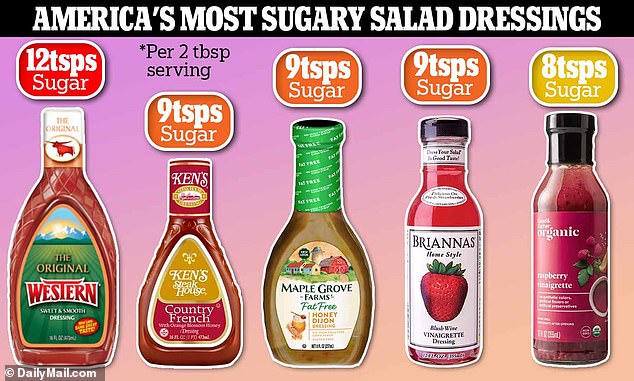People know to avoid fast food or sweets when trying to cut back on fat, sodium and sugar, but a new study suggests Americans are unwittingly consuming too much of these ingredients from unexpected foods.
Dietary guidelines recommend limiting fat and sugar to 10 percent of daily calories, but research found that saturated fat made up at least 12 percent of daily calories and added sugar intake ranged from 14 to 16 percent of calories.
A list of foods and drinks recently compiled by American researchers shows many common culprits: pizza, French fries and ice cream.
But it also showed several more surprising sources of saturated fat and added sugars, such as chicken and salad dressing.
Hidden foods, according to the researchers behind the latest study, could explain why most Americans overindulge in sugars and fats, greatly increasing their risk of heart disease, stroke, diabetes and obesity.
Pizza, along with cheese and ice cream, was among the top sources of saturated fat in people’s diets.
Hidden sources of sugar and saturated fat muddy the waters for people trying to make healthy food choices and make it harder to stick to a healthy diet.
Among the usual suspects, including desserts, pizza and white bread, there are some less obvious offenders, such as salad dressings, which are often loaded with added sugar and vegetable oils, and cured meats, which contain saturated fats.
Researchers from the University of Arizona, Georgetown University, the University of Southern California at Los Angeles and Ohio State University analyzed data from the National Health and Nutrition Examination Survey, which included more than 36,000 American adults between 2005 and 2018.
Researchers asked participants to recall everything they had eaten in the previous two days and sort the listed foods into 168 different categories.
Their findings were published in the journal Nutrients.
Fifty-four food categories accounted for 90 percent of saturated fat intake. Cheese, pizza and ice cream were the most affected.
Eggs and tortillas, burritos and tacos, and chicken were also major sources of saturated fat.
Saturated fat, found in foods such as butter, cheese, red meat, pastries, bacon and fried foods, is thought to increase levels of cholesterol, a waxy substance, in the blood.
Over time, this substance can build up on the walls of your arteries. High cholesterol has been linked to an increased risk of stroke and heart disease.
High consumption of saturated fat has long been considered a major risk factor for heart attack and stroke, but emerging evidence is challenging that widely held belief.

Five salad dressings with labels like “organic” and “fat-free” still had between eight and 12 grams of added sugars — more than a Krispy Kreme doughnut.
Scientific reviews and meta-analyses in recent years have… I didn’t find any link between saturated fat intake and overall risk of death, risk of heart disease and risk of death, risk of stroke, or type 2 diabetes in adults.
The researchers in the British Journal of Sports Medicine added that to prevent heart disease, “there is no benefit of reducing fat, including saturated fat, on myocardial infarction, cardiovascular or all-cause mortality.”
Dr. Christopher Taylor, a registered dietitian and professor at Ohio State University, said: ‘Chicken breast is promoted as a lower saturated fat food, but it still has some saturated fat.
‘But it’s helpful to know how foods with smaller amounts also slowly add saturated fat stealthily into the diet.’
As for added sugars, 30 categories accounted for 90 percent of intake, with soft drinks being the main sources.
Other major sources of added sugars include ketchup, sweetened tea, honey, cakes, jams, and juices.
The average American consumes about 68 grams, or 17 teaspoons, of sugar per day, which is about 300 percent of the recommended amount, which could contribute to rising obesity rates in the U.S.
Nearly half of American adults are classified as overweight or obese.
At the same time, consumption of added sugar has been declining for about 20 years, according to the Sugar Association, a trade group for the sugar industry.
Dr Taylor added: “Being able to meet less than 10 per cent is about identifying the big contributors, but also being able to see where saturated fat and added sugar may still be present in other food choices. It doesn’t make them bad choices, it’s about being aware of how your morning latte may be contributing.”
Added sugar is hard to avoid, according to Dr. Susan Schembre, a professor of oncology at Georgetown and senior author of the study.
“It’s everywhere. It’s found in many unexpected foods and often in surprising amounts,” he said.


